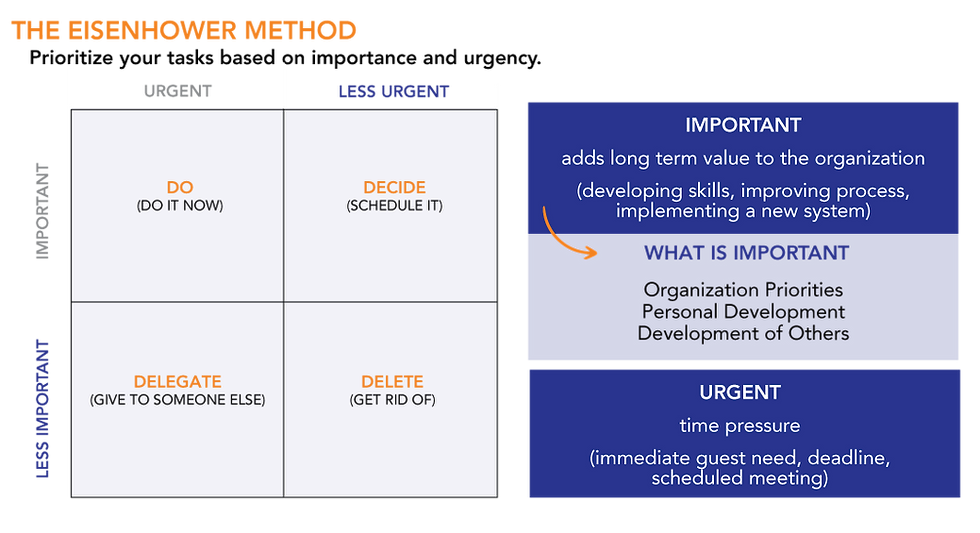Strategic Planning with Purpose: How to Build a Strategy That Works
- Erin George

- Oct 27
- 3 min read
Do you ever feel like your organization is getting the day-to-day work done, but lacking direction? You’re not alone. This is where a plan – specifically, a strategic plan - comes into play. Strategic planning can feel overwhelming, especially when the urgent demands of daily operations crowd out the important work of long-term visioning. But here’s the truth: a strategic plan is one of the most powerful tools an organization can use to move from reactive to intentional.

Why is Building and Using a Strategic Plan Important?
Strategic planning is about imagining the possibilities and outlining a plan to get there. It creates space for leaders to reflect on who they are, who they aspire to be, and how to focus their resources to get there.
A strategic plan helps organizations:
Define their mission, vision, and values
Identify critical issues and gaps
Set strategic priorities that inspire and focus
Build actionable, measurable steps to move forward
And yet, according to Harvard Business School,
48% of leaders spend less than one day per month discussing strategy.
Why? Because everything else gets in the way. When we look at the Eisenhower Matrix to guide productivity, this work falls into the category: IMPORTANT/NOT URGENT. That means that, most often, the IMPORTANT and URGENT wins out!

As a recent Inc. article explains, companies that prioritize intentionality over urgency build cultures that reward thoughtful contributions and long-term value. For leaders, it’s about making the shift from urgency to high value.

Learner taking e-Learning on Spark Development
Investing time in strategy is a game-changer—especially for small and mid-sized organizations that need to maximize every resource.
How Often Should Strategic Planning Happen?
We’ve found that most organizations benefit from a comprehensive strategic planning process every 3–5 years, with annual reviews to assess progress and adjust. Think of it like following directions for your annual vacation to the beach - you don’t need to enter your destination’s address repeatedly, but you do need to make sure you’re still on course.
Why Use an Outside Firm to Facilitate the Strategic Planning Process?
Bringing in an external facilitator isn’t a luxury—it’s a smart investment. Here’s why:
Fresh perspective: Outside consultants challenge assumptions and bring industry insights.
Neutral ground: They create space for honest dialogue and collaborative decision-making.
Structured process: They guide teams through proven frameworks, keeping momentum high and distractions low.
Bringing in a third party is shown to revive the process with fresh thinking and unlock real impact.
As Fast Company puts it, “The best strategic plans are built collaboratively, with input from across the organization. Outside facilitators help unlock that collaboration by creating space for honest dialogue.”
What Does Strategic Planning with Purpose Look Like at Kane Learning?
At Kane Learning, we specialize in making strategy accessible, energizing, and actionable. Our approach stands out because we:
Keep it simple: We demystify the process and break it down for you.
Make it inclusive: We involve staff, boards, and leadership teams to build ownership and accountability.
Focus on implementation: Our plans include SMART actions and clear next steps.
Customize every engagement: No two organizations are alike, and neither are our strategic plans.

Michelle White, Kane Learning's Organizational Effectiveness Team Lead,

describes it best:
“There is POWER in involving others. When we get the buy-in of others, we all feel ownership and accountability.”
In today’s business landscape, strategic planning is especially critical for mid-sized organizations seeking to stay competitive, optimize resources, and foster team alignment.
A Client's Perspective
"Partnering with Kane Learning brought fresh insight and energy to our strategic planning. Their thoughtful collaboration with both leaders and staff made the process not only highly productive, but also genuinely enjoyable. The result—a clear, concise mission statement and a detailed action plan with timelines—gives us a practical roadmap to guide our work moving forward."
~ Susan Jagers, Executive Director, AOHC (Association of Ohio Health Commissioners)
Bringing it All Together
Strategic planning isn’t just a business exercise – a check mark on our list of to-dos, or something we did once and never went back to. It’s a leadership practice. It’s about stepping back to ask the big questions:
Who are we?
Where are we going?
How will we get there?
When done well, a strategic plan is more than a document! It provides a shared language, a source of alignment, and a tool for action. It helps organizations stay focused, adapt with intention, and move forward together!
Whether you're starting from scratch or refreshing an existing plan, the most important step is simply to begin. Make space for the conversation. Invite others in. And commit to a process that reflects your values and vision.
Want to learn more about Kane Learning's Strategic Planning with Purpose? Click here.
Want to learn more about boosting productivity? Click here to see a demo of our e-learning.
Source links:



Comments